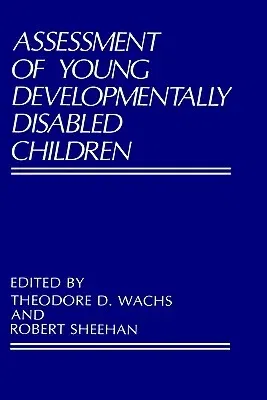Assessment of Young Developmentally Disabled Children (1988)Hardcover - 1988, 31 May 1988

Qty
1
Turbo
Ships in 2 - 3 days
In Stock
Free Delivery
Cash on Delivery
15 Days
Free Returns
Secure Checkout

Part of Series
Perspectives in Developmental Psychology
Part of Series
Critical Issues in Social Justice
Print Length
420 pages
Language
English
Publisher
Springer
Date Published
31 May 1988
ISBN-10
0306427338
ISBN-13
9780306427336
Description
Product Details
Book Edition:
1988
Book Format:
Hardcover
Country of Origin:
US
Date Published:
31 May 1988
Dimensions:
23.39 x
15.6 x
2.54 cm
ISBN-10:
0306427338
ISBN-13:
9780306427336
Language:
English
Location:
New York, NY
Pages:
420
Publisher:
Weight:
789.25 gm